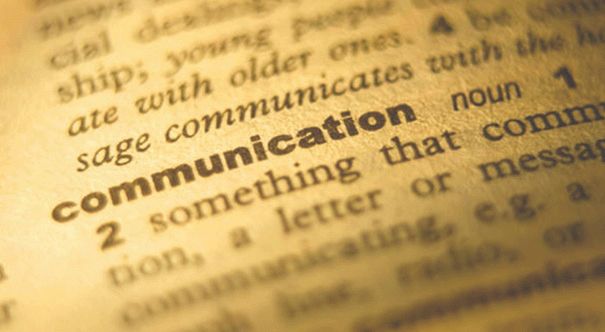
by Nicole | Jan 27, 2017 | Professional, Published, Resume Writing, Tips and Tricks, VINAZine
Whether you’re looking for a career change or your very first job out of college, we don’t have to tell you how important it is to make sure your resume shines bright like the star you are. If you are looking for ways to make sure your resume stands out against the ever-growing sea of applicants, check out these tips below for some inspiration!
DO A LITTLE TAILORING
You may be applying for multiple jobs at one time, so change up certain aspects to better customize the resume for that particular job. For example, you can reorganize the order of your professional skills. Whether you’re going after a writing gig, a retail management position, or something at a Fortune 500 company, be sure to tailor your resume respectively and include the things relevant to that industry at the top of the list.
KEEP IT TRENDY
Trends for resumes are constantly changing, so make sure you’re ahead of the curve by doing a little research. Hit up Google and LinkedIn to find articles and sources on the latest and greatest resume tips. Some quick ones for keeping it fresh in 2017 are:
- Forego the objective and replace it with a short biographical profile. A quick statement can be a few lines about you and your experience, as well as what you are seeking professionally.
- Avoid using caps. (SEEMS A BIT SHOUTY, DON’T YOU THINK?)
- Stick to using no more than two complementary fonts. This is a classic design trick that helps avoid inconsistency and distraction.
- Make sure it fits on one page. You want to also leave space in the margin to allow the interviewer space to make notes.
MAKE IT MODERN (READ: VISUALLY APPEALING)
Calling all ladies in the visual arts field – show your potential new boss how creative you can be by making your resume pop on the page by using bright colors and graphs. Just make sure it looks good on the screen and in print – print a couple of versions in color as well as in black and white to make sure your information still stands out to your future employer no matter which way they’re viewing it.
Not in the visual arts? Keep it sleek and chic. You can use an online resume builder service, like ineedaresu.me (which is free, babe!), to help you build a gorgeous, modern resume in just minutes.
IF YOU CAN SWING IT, HIRE A PROFESSIONAL (Like me!)
There are many resources out there for hire – you just have to search! Contact a local college or university’s writing center to see if there are any student writing consultants or recent graduates looking for extra work to build their resume. You can also place an ad on Upwork, a popular freelancing website. LinkedIn may also harbor some connections you already have who provide resume or professional writing services.
Even if you aren’t looking for a new job, it’s always a good call to make sure your resume is in tip-top shape should an opportunity swing your way. After all, your next career move may be waiting for you around the corner!
(Feature image via Popsugar)
This post was originally published on the VINAzine. <3
by Nicole | Feb 7, 2015 | Creative Non Fiction, Creative Writing, Fiction, Flash Fiction, Journals, Poetry, Prompts, Prose, Tips and Tricks, Writing
Happy Saturday, fellow writers! If you’re sitting around with writer’s block and need something to get your pen moving, I have just the thing: Brainstorming First Lines.
I have a confession: I struggle with first lines. When I sit down to write a fiction piece, I usually just dive right into the story and go back later to finesse the beginning – just like what I do when writing nonfiction. I want to draw the reader in without being cliché… but for me, sometimes that’s easier said than done. (Ha! See what I did there?)
Earlier today I started out with something that described the weather. How boring. I mean, really? I couldn’t continue, so I deleted the draft and started wracking my brain. When my writer’s block kicked in, I took to the internet. (I love the Internet. Seriously. It has literally everything.) I went through a few random generators on some random websites found via Google Search to help get some words, phrases, and lines to help me generate a story. ABSOLUTELY BRILLIANT, I thought.
I jotted down a handful of lines I found that I felt had some promise. That’s when I figured I should share with my writing friends. Anything to help the creative process!
Here are some of the best lines I found that make me want to stop everything and write something down:
1. She knelt on the carpet of her new living room, a big cardboard box in front of her, unwrapping ornaments.
2. He was stunned. The stranger in front of him looked exactly like the girl he’d been dreaming about.
3. As he took in the view from the twentieth floor, the lights went out all over the city.
4. It was up to her to investigate how the accident had really happened.
5. The attack was over in seconds.
6. He watched, helpless, as the door closed behind her.
7. She felt for the lock in the dark.
8. More and more people were refusing to obey the laws of the land.
9. Under normal circumstances he would speak his mind, but, with a gun against his head…
10. He had waited twenty years to return it.
If any of these intrigue you, start writing and see where it takes you. If you want to see more variety or find something different, just do what I did – hit up Google and search for random writing generators to get some more ideas and prompts. Maybe you’ll find something for your next brilliant masterpiece. That’s what I’m hoping for, anyway. Have a lovely Saturday and happy writing!

by Nicole | Oct 10, 2012 | Life, Personal, Professional, Tips and Tricks, Writing
No witty introduction to this one – we’re diving head first today!
I work in Corporate America… and I can’t tell you how many times I want to claw my eyeballs out of their sockets with the nearest sharp utensil when I read a terrible email from a colleague. Why does this happen? I have to assume a lack of proper preparation for workplace environments is to blame.
Over the summer, I took a course about teaching technical communication. Because of that course, I have narrowed down the area of college writing I want to teach – writing in the technical world for engineering and science students. I think it’s important for students bound for a corporate, professional workplace after they graduate understand how to effectively communicate through writing.
Our world has most definitely reached the digital age in recent years – communication will never be the same as a result. It seems that we, in corporate environments, converse with our colleagues over email and IM systems more than we pick up the phone. I personally like this, because I find it easier to be more concise with my words and convey my point clearly. Granted, there are some times where it’s always better (and easier) to pick up the phone or schedule some face time with your co-workers, but it’s essential to corporate success that people understand how to communicate through written words.
Some tips I’ve come to hold near and dear when composing work emails, documents, and more are as follows. If you can remind yourself of these when writing a co-worker, you’ll be off to a great start.
- Keep it simple and be quick, clear, and concise as possible. Short and sweet is the best way to go – you don’t want to bog your readers down with pages and pages and pages to read. Explain your message clearly, be concise, and be sure to get to your point as quick as you can – if you are a busy person, you should assume your reader is just as time-poor as you are.
- Write as you would talk – except use the proper version of your language. Your voice is what the reader will hear when they read your message, so make it conversational. Don’t be afraid to let your personality shine through, either – these are your words, and you are attaching your name to the message… so own it!
- Break your message into short paragraphs and avoid long sentences. Reading words on a screen can be daunting for some, and easier for others. Accommodate your audience – breaking up your paragraphs and keeping sentences short will allow your message to be easier to read. I tend to get overwhelmed when a colleague sends me a long email and it’s all in one paragraph. I have literally copied and pasted it into a Word document to break it down, so I can receive their message a little more clearly. Think about this the next time you don’t use paragraph breaks!!
- Maintain a positive tone. It’s tough to read emotion through written word sometimes (especially in text messages!), so it’s important to be positive throughout your message. This will help your reader see the point you’re trying to make without negativity.
- PROOFREAD AND EDIT BEFORE SENDING! I will say this over and over until my students understand this must happen EVERY SINGLE TIME a message is sent to someone through written words. I won’t lie – I’ve caught some serious typos or found that my message didn’t make sense when I reread it before sending. I suggest reading your message to yourself out loud to see if it makes sense. Things seem to read differently when you hear them aloud versus when they stay on the page. Don’t hesitate to have someone take a glance too – a fresh pair of eyes can catch things we don’t the first few times around.
Of course, there will be exceptions. Case in point, my boss and I are very close – if someone read our emails, you’d be able to tell that right away. We use emoticons and sometimes shorthand, but most of the time we keep it super professional – our company records all communication for legal purposes, so we want to be sure we’re professional when on the record. We start with the usual address (“Hi Nicole,”) in the first round, but then usually it’s a conversation back and forth in the replies that follow. The important thing here to be sure you gauge your audience and use communication to accommodate accordingly.
If you have questions or want more advice about writing for work or your professional environment, let’s chat!

by Nicole | Nov 30, 2011 | Professional, Tips and Tricks, Writing
It’s no secret: I have always enjoyed writing. During the past few years, I’ve discovered I have a knack for professional and technical writing. I know, it seems kind of boring at the surface… but I love it. I enjoy creating how-to guides, drafting emails to colleagues, and editing/revising professional documents to make sure they are as clear and concise as possible.
During my undergraduate studies, the course I completed have helped me improve my craft tremendously, and I still use many of those practices I learned in the classroom today. This includes how to draft letters and emails to clients and colleagues, as well as how to communicate clearly with other professionals.
From my experience as a writing tutor, I realize writing is not a strong point for everyone. That’s OK – that’s why I’m here. :) In all seriousness though, I have one tip that can save you when communicating through writing.
PROOFREAD.
It is absolutely necessary to proofread your messages before sending. Start to think about what you want to say and how you want to say it… before the words come out. When it comes to communication through written documents or over the internet, you have the upper hand. Take the time to proofread your message. I promise it will save you time and embarrassment in the future.
I cringe when I receive an email with bad grammar and spelling mistakes. Well, I cringe when I see bad grammar and spelling mistakes in general. I feel that to get your point across and be respected, there is little to no room for errors when communicating with colleagues. Now, I’m not saying I’ve never made a mistake and sent something without proofreading… but when I have, I learned my lesson almost immediately.
Before I send out any email to a client or colleague, I proofread it once or twice. I can guarantee you I catch something every single time I give it another look. I search for spelling and grammatical errors. Sometimes to double-check myself, I even paste the draft into MS Word to run a spell check if my mail client doesn’t offer the service. I get embarrassed when I send an email to someone and it has errors throughout the draft. When I receive an email like that, I won’t lie to you… I can’t take it seriously. The sender did not want to take the extra time to proofread for mistakes or make sure their message is clearly conveyed.
Don’t be afraid to ask for someone to read over your message.
Always have a fresh pair of eyes look over a document, no matter the length. Even if you are an expert writer, I guarantee you will miss something if you don’t take the time to proofread or have someone else double-check your work for you. In my last job, my co-worker and I would read emails out loud to one another to make sure we a) sounded clear and concise and b) found any/all errors. Granted, this doesn’t help catch spelling errors, but that is what the second pair of eyes (and spell check) is for.
Another scenario: the company I used to work for added another fellow English major to our staff, so we had two in-house writers with proofreading skills. The marketing department would constantly rely on both of us to proofread documents for errors before it was published. Also, we could use each other as a fresh pair of eyes. Every single time we read each other’s work, we would find something the other didn’t find before. See, even two English majors made mistakes – but we were there for each other to correct them before anyone else read the material.
When in doubt, Google it.
I do understand that grammar and spelling may not be a strong skill many people have – but with the internet, I don’t believe anyone can use that as an excuse. Even I use Google to double-check myself on occasion. Chances are if you have a question, someone else does too, and they’ve gone on the internet to find the answer. The internet is a wealth of knowledge, so don’t be afraid to use it.
I am a huge advocate for using the internet to do everything. Shopping, connecting, communicating, writing, researching… you can do virtually anything on the internet. So, when you’re having trouble getting the spelling right or you’re not sure if you’re using a word in the correct form, open up your browser and head to Google.
The moral of the story: always, always, always remember to proofread.
Read over your email a few times before you send it. You might find a spelling error or that you can better phrase a sentence. If it makes you feel better, just remember that even the best writers make mistakes. If you need some help, feel free to contact me. I can guide you along the way and be that second pair of eyes you know you will need sooner later. Good luck!

by Nicole | Nov 28, 2011 | Professional, Resume Writing, Tips and Tricks
Résumés. We all need them for one reason or another. Whether you have found a wonderful job and have no intention to leave, or you are looking for a career change, it is always a good idea to keep your résumé fresh and up-to-date. Websites like LinkedIn make it easy to maintain your professional experience while allowing you to highlight your skills, display recommendations, and much more… but it’s simply not enough. I believe you must have your résumé in tip-top shape if another opportunity should arise.
I have rebuilt my résumé several times to cater to specific positions, and that goes for cover letters as well. Since I have helped others for a while now, I figured I would post some quick tips for building a stellar résumé.
The most important tip… Follow the ‘KISS’ rule – Keep it Sweet and Simple. General rules apply here:
- Stick to one page
- Don’t go overboard with fancy fonts
- Highlight your best features
- Cater to the position
1. Stick to one page. You should assume employers do not have the time to shuffle through pages and pages of information about you. If you lay out everything about your professional history on your résumé, what have you left to talk about in the interview?
2. Don’t use more than 2 fonts. Also, keep these fonts simple. Go with Times New Roman, Calibri, Helvetica, and others that are similar. For examples of fonts you should not use, click here. Some might say you can get away with using 3 fonts, but I think it’s only acceptable to do so if you have a custom header. For example, in the past I have used a letterhead with a different font than what is on the rest of the résumé. I have since thrown that out because I felt it wasn’t simple enough. You don’t want to overwhelm the reader, or even confuse them. Just because you think it may look pretty, doesn’t mean the employer will.
3. Highlighting your best features is key. You want to show the employer immediately that you are the best fit for the job based on your previous experience. I suggest reading over the job qualifications and using those as a starting point. Let’s say they need applicants to have experience in customer service and management and computer skills. You will want to highlight your expertise with computer operating systems, specific programs (such as Microsoft Word and various Adobe products) and your ability to work as a team player and lead others.
4. Cater to the position for which you are applying. There is some wiggle room here. I have friends who are in creative industries (films, music, etc.) who have interactive resumes. These are awesome, but wouldn’t fly for an office assistant position. It’s simple – if you are searching for a job that allows you to show your creative side, take the risk and make your résumé colorful. If you are looking to work in a professional office setting, it might be best to play it safe and keep it simple.
Other Tips
The traditional “Objective” line is starting to disappear, but is still very acceptable on a résumé. Profile summaries are becoming popular – this gives you a chance to brag about yourself before the employer gets to your history. Here is my basic profile summary:
Profile
Exceptionally skilled editor and writer with experience in editing and publishing, as well as content and copywriting. Knowledgeable with current computer and Internet technology, as well as social media experience. Indiana University graduate with a Bachelor’s degree in English (Writing & Literacy), with the intent to pursue a Master’s degree in English. Fast learner and highly adaptable. Experienced communicator and team player.
I change my summary to cater to each position. If I am sending this off for a writer/editor position, I would probably add “excellent proofreading and editorial skills” or change my first line to “Exceptionally skilled writer with training in the editing and publishing field, as well as experience writing content and copy.” How you spin it is what catches an employer’s eye.
ALWAYS PROOFREAD BEFORE SENDING!
I can’t stress this enough. In the past, I have caught myself almost sending a résumé with a typo or incorrect grammar. Save yourself the embarrassment and proofread! You can never look over your résumé enough, and it always helps to have a second, third, or even fourth pair of eyes take a glance as well. I know people who have submitted a résumé after proofreading, but still did not catch every error. I have been guilty of that – but I learned from it immediately. Do not be afraid to ask for help. If you need a proofreader and don’t want to be judged, I’m your girl. Send it my way and I’ll be glad to help you!
Do Not…
- Rely on a résumé wizard. You are better off looking at examples of other résumés and formatting yours on your own.
- Talk salary, reveal your gender, age, marital status, hobbies, etc. It is simply unprofessional.
- Add references. If an employer wants them, he or she will ask for them.
- Focus on gaps in employment history. An interested employer will ask you about them if they are curious, and people understand there are reasons (especially in the last few years) why you have been unemployed. Just be ready to talk about it in the interview.
Click here to read some examples of what not to write… and yes, these people actually put that on their résumé!
Again, there are some jobs out there that do not want you to go the traditional route with your résumé, so don’t be afraid to take the risk. Just trust your gut and ask yourself… would I honestly hire someone with this résumé?
When I have helped others complete or revamp their résumés, they have been successful finding a new position. It’s a tough market out there, so make yourself stand out. I can’t guarantee you will find your dream job, but you can gain a nice head start by having different variations of your résumé ready to send to potential employers. At this point, I think I have at least 5 different variations of mine, and I’m still creating more as I go.
If you need some help, feel free to contact me. I won’t charge you an arm and a leg, but I will offer you some advice should you need it. Don’t forget, I’ll even proofread it for you. Good luck!
(Photo credit: http://www.wornthrough.com)




